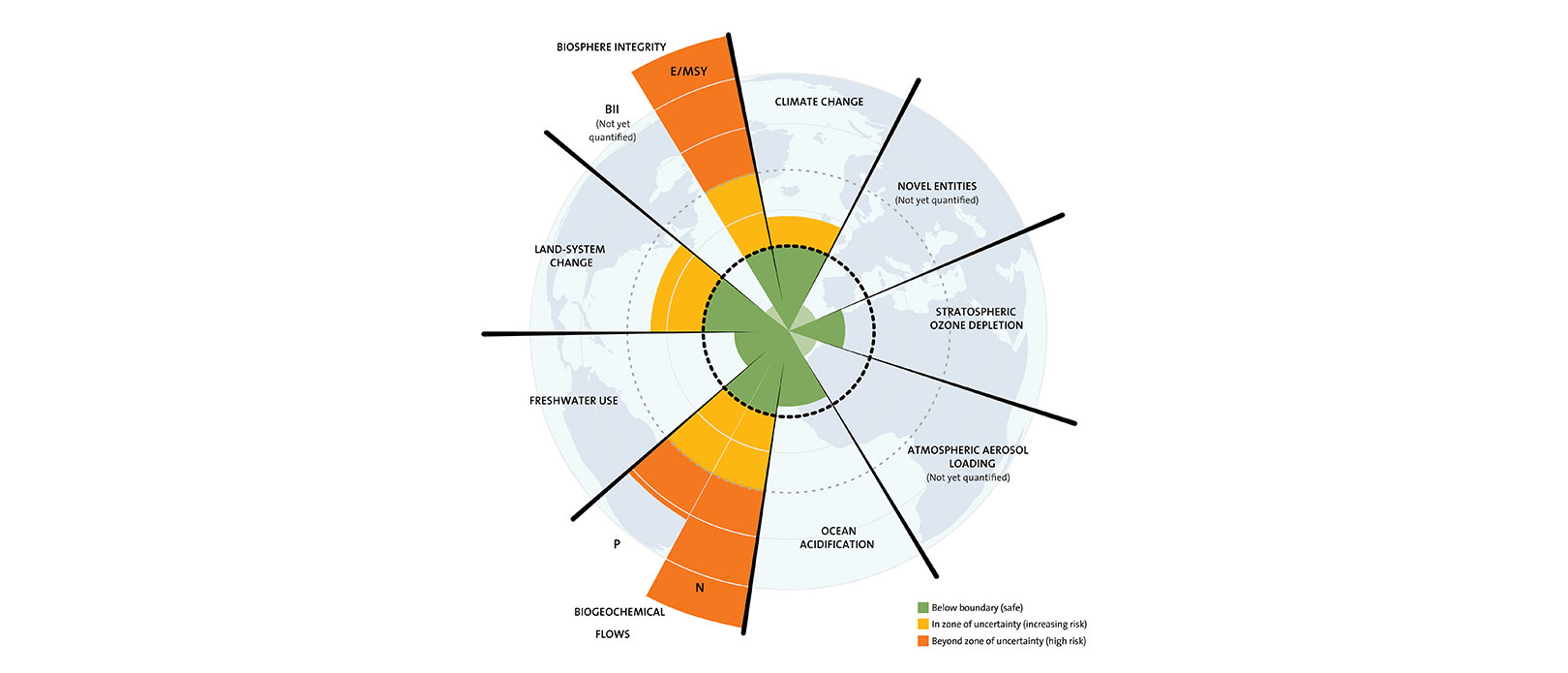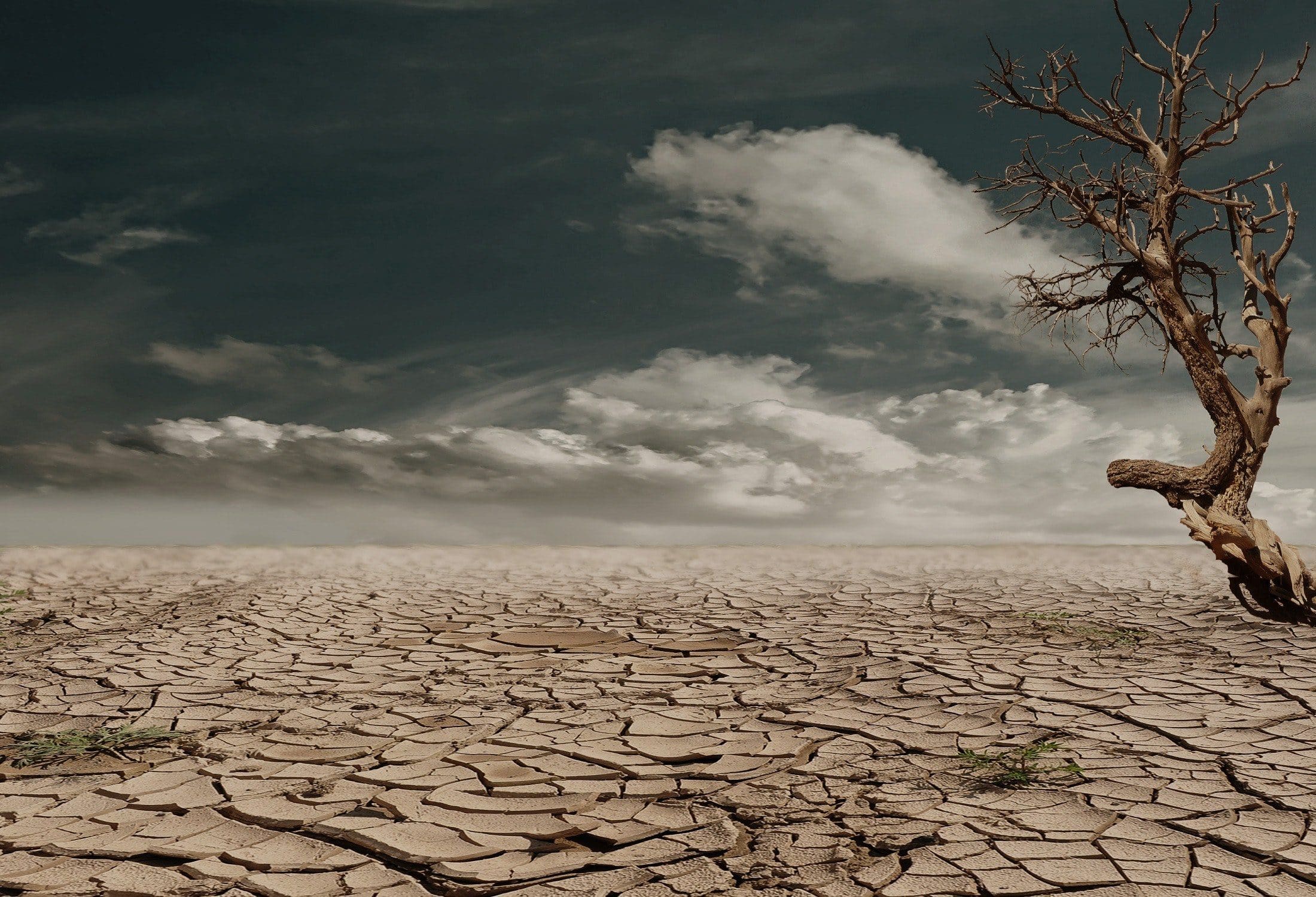The nine planetary boundaries were first proposed in 2009 by a group of 28 internationally renowned scientists led by Johan Rockström – former director of the StockholmResilience Centre. They are intended to act as a framework for understanding humanity’s impact on the Planet and the potential consequences of exceeding certain environmental thresholds.
The nine boundaries are:
1. Biosphere integrity
2. Climate change
3. Stratospheric ozone depletion
4. Ocean acidification
5. Freshwater use
6. Land system change
7. Atmospheric Aerosol loading:
8. Nitrogen and phosphorus cycles
9. Chemical pollution

Exceeding any one of these boundaries would be expected to cause significant and irreversible environmental damage and potentially jeopardise human wellbeing. For example, biosphere integrity is vital for maintaining the Earth’s ability to provide food, fresh water, and other essential resources. If this boundary is crossed, it could lead to mass extinctions and a breakdown in the global food system. Similarly, climate change threatens to destabilise societies by causing extreme weather events, sea-level rise, and displacement of people.
The nine planetary boundaries provide a useful framework for thinking about humanity’s impact on the environment. However, it is important to remember that they are not hard and fast rules. Rather, they are meant to be used as a guide – a compass, if you will – to help us make informed decisions about how we use and manage the Planet’s resources in a way that supports human flourishing well into the future.
The I AM IMPACT Project explores the interconnected relationships of these tipping points with humanity’s opportunity at the start of the Anthropocene epoch. It challenges us to take ownership of our daily decisions that impact environmental pressures, planetary boundaries and their inevitable social consequences—allowing us the choice of either making a positive impact – or simply remaining part of the status quo.
Indigenous Wisdom and why they matter (most)
As R.D.K Herman rightly points out in his paper Traditional Knowledge in a Time of Crisis: Climate Change, Culture and Communication, while the 9 Planetary Boundaries introduce a western perspective on system resilience, we must recognise that they are based upon certain biases for science, reasoning and economic logic. To gain a more absolute comprehension of resilience, Indigenous knowledge should be heard, and actioned.
By drawing on a variety of practices such as traditions, explorations, observations and lived experiences over many generations, traditional cultures have accumulated an immense amount of complex knowledge. To gain insight into resilience measures for our society, we must recognise and value this deep-rooted Indigenous wisdom.
